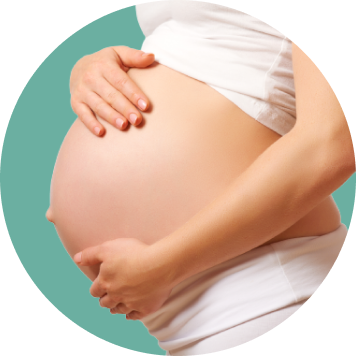Note
This page may contain affiliate links, and I may earn a small commission when you click on them (at no additional cost to you). As an Amazon affiliate, I earn from qualifying purchases. These products were researched and selected with care. However, because things change, make sure to check the safety profiles (and be on the lookout for any recalls) before using them.
An important part of trying to get pregnant is figuring out when to have sex. Ideally, you want to have sex during your “fertile window.”
What’s That?
Your fertile window is the time of the month that you ovulate (i.e. when you release an egg from your ovary).
How Do I Find My Fertile Window?
The first step in finding your fertile window is to determine how long your menstrual cycle is. This will give you a sense of when you ovulate (since ovulation typically occurs halfway through a woman’s cycle).
PediaTip: You can use an app like the Life-Period Tracker Calendar to figure out the length of your cycle.
Reality Check: Because the length of your cycle may vary (by a day or two) each month, you’ll want to track your cycle for a few months to see the overall trend.
PediaTrivia:
- On average, a woman’s menstrual cycle lasts 28-35 days. This includes the whole shebang – bleeding days, ovulation, etc.
- The first day of your menstrual cycle is the first day of bleeding (spotting counts, too).
- As mentioned above, ovulation typically occurs halfway through a woman’s cycle. This means that women with a 28-day cycle will usually ovulate on Day 14 and women with a 32-day cycle will ovulate around Day 16.
Once You Have a General Idea of When You Ovulate, Be on the Lookout for Signs of Ovulation.
These Include:
- Cervical Mucus Changes: Your cervical mucus (vaginal discharge) will become clearer, wetter, and more slippery around the time you ovulate. Sorry, I know, TMI. When it looks like uncooked egg whites, you’ll know you’re ovulating (ahh-sorry again!).
- Temperature Changes (aka It’s Getting Hot in Herre): There’s always a rise in body temperature after a woman ovulates. Because of this, some women use a thermometer to monitor their “basal body temperatures.” Once they get a sense of their personal pattern, they have sex before the rise in temperature occurs. Get Wise about how to measure your Basal Body Temperature.

PediaTip: If basal body temperature monitoring seems like too much trouble, try an ovulation predictor kit. Ovulation predictor kits can be pricey, but they’re accurate and easy to use.
How Do I Use an Ovulation Predictor Kit?
Ovulation predictor kits aren’t all that different from home pregnancy tests. You simply pee on the “stick” provided first thing in the morning (around the time you think you’re ovulating). The test will tell you if you’re in your fertile window.
How Do the Ovulation Predictor Kits Work?
They detect luteinizing hormone (LH), a hormone that surges 36-48 hours before you ovulate.
Putting It All Together
- If you’re trying to get pregnant, you’ll want to have sex (intercourse) during your fertile window (when you’re ovulating). Get Wise about “Trying to Get Pregnant” Sex here.
- Once your egg is released, it must be fertilized by a sperm within 12-24 hours or there won’t be a pregnancy.
- Although the egg doesn’t survive for long, the sperm can live up to 6 days in your body. Therefore, you’re most likely to get pregnant either on the day of ovulation OR during the 5 days leading up to it.
Common Fertility Question: How Long Does It Take for Fertility to Return After Stopping Birth Control?

The Short Answer: It depends on the type of birth control you were using. If you were practicing natural family planning, there will be no delay. On the other hand, if you were using something like the Depo-Provera shot, it can take up to 9-10 months for your fertility to return.
Get Wise(r) about the details here.
The Bottom Line
Figuring out your fertile window will help you maximize your chances of getting pregnant.








